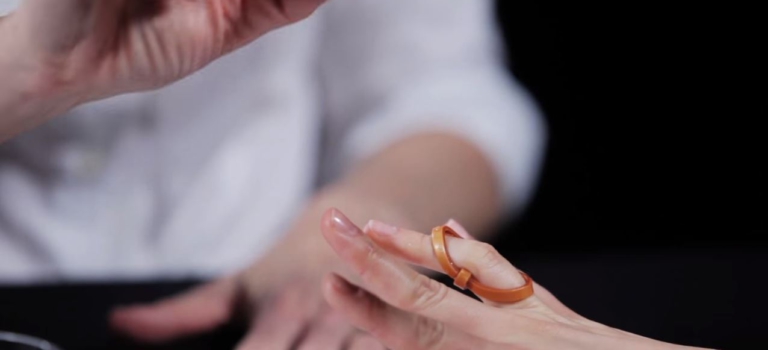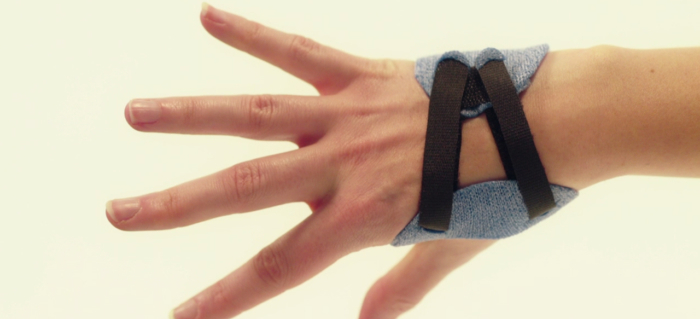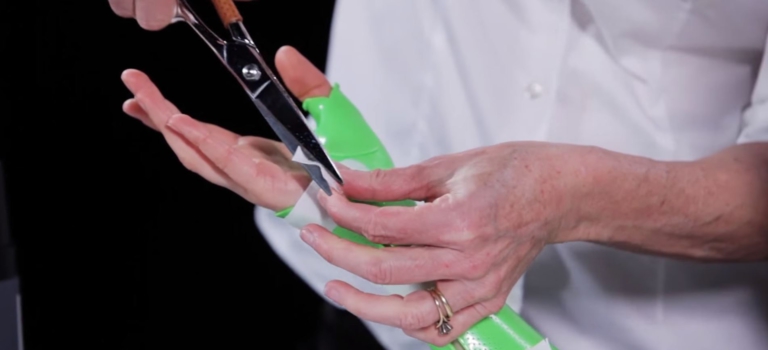
Splinting with Orfit materials: Anti claw orthosis from Orfit Strips
Splinting Techniques: Video 6 of 10
This week, we have an instruction video for an anti claw orthosis, made from Orfit Strips in Orfit Colors NS 3.2mm.
Injury to the ulnar nerve may cause an abnormal hand posture typically referred to as “clawing” of the ring and little fingers. This posture includes hyperextension of the Metacarpo-phalangeal joints (MCP)’s and flexion of the Proximal-interphalangeal (PIP) and Distal-interphalangeal (DIP) joints and is emphasized when the person attempts to straighten their fingers. The ulnar nerve injury affects the intrinsic muscles of the hand which not only abduct and adduct the fingers but also help to flex the MCP joints. Without these functioning intrinsic muscles, the MCP joints are pulled into hyperextension from the force of the unopposed long extensors. The intrinsic muscles also contribute to extension of the IP joints and without them, the PIP and DIP joints flex. The combination of hyperextension at the MCP and flexion at the IP joints gives the hand its claw like appearance.
The anti-claw orthosis, also known as a lumbrical blocking splint or MCP blocking splint, positions the MCP joints in 90° of flexion and prevents hyperextension. The orthosis facilitates PIP joint extension, while allowing for full grasp. Maximal functional use of the hand is maintained.
Watch the video to learn how to create this type of orthosis:
Any questions about this video or about any of our other posts? Don’t hesitate to contact us directly at welcome@orfit.com.



